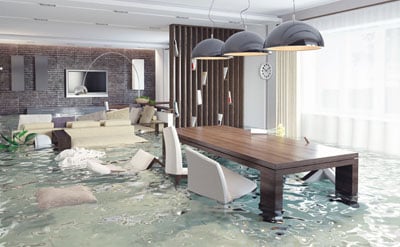
When water floods a home or business, it feels like the hardest part is already over once the water stops. But the truth is, getting everything cleaned up can take longer than most people expect. That is especially true when it comes to water damage restoration in Santa Monica. What seems like a simple job often hits a few unexpected roadblocks.
Santa Monica has some extra challenges that can slow things down. Whether it is the weather, how the city handles paperwork, or rules within buildings or complexes, each small problem can stretch cleanup into days or even weeks. We have worked through plenty of these situations and want to share what tends to slow things down and why.
Why Santa Monica’s Climate Slows Things Down
Living near the beach has its perks, but it can also bring some side effects, especially when dealing with cleanup. Santa Monica’s coastal weather holds lots of moisture, even through early October. During this time of year, cooler evenings return, but the daytime humidity can still hang around. That extra moisture in the air makes drying time longer than expected.
Here’s what usually gets affected:
- Drying out wet floors, walls, or structures takes longer since there’s already a lot of moisture in the air
- Equipment used to remove moisture has to work harder and stay in place longer
- Salt air from the coast can also wear on equipment and materials, making some repairs more delicate
These weather patterns might feel normal if you are used to living in the area, but they do make jobs like drying and repair more time-sensitive.
Permit Delays and Approval Wait Times
In Santa Monica, most water damage restoration work does not start right after cleanup crews arrive. Instead, many types of repairs need permits from the city first. Think about projects like drywall replacement, electrical work, or rebuilding parts of a bathroom. Even if the damage seems small, the city may still need to inspect or sign off on the plan.
There are a few ways local rules can slow things down:
- Getting permits approved can take days, especially when city offices are backed up
- Some types of restoration work cannot begin until those permits are confirmed
- Certain flood-related repairs might require follow-up inspections, which need to be scheduled in advance
While we are always ready to jump in quickly, we have learned to build in time for those approval steps, especially when coordination with city offices takes longer.
Delays related to paperwork can surprise people who want to see their home or building restored as soon as possible. Even if everyone involved is quick to respond, schedules and processes depend on the city’s pace. People moving back into their property are often eager to see progress, so it helps to prepare for a little waiting between repair steps.
Building Access and HOA Restrictions
If you are in a shared building, limited access can be one of the biggest hold-ups. Many apartments and condominiums have extra steps before any work can begin. That might include alerting the building manager, submitting repair requests, or getting written clearance from the homeowners’ association.
This does not just apply to major rebuilds. Even setting up fans or hauling out soaked carpet can require permission. Some HOAs only allow certain hours for repair work, while others have strict rules on where crews can park or set up equipment.
Here is how that can delay progress:
- Crews may have restricted hours to work, which stretches out the full repair timeline
- Emergency steps like water extraction might be slowed if the building locks down entry after hours
- Waiting for final sign-offs from an HOA board might take days, especially if their schedule does not align with the urgent need
We have seen perfectly planned jobs fall behind because someone had to wait until a Tuesday meeting just to get a repair plan approved.
Even when everything seems ready to move ahead, these access rules add extra steps. Working in a multi-unit building often means collaborating with more people, each with different priorities or rules. Being aware in advance of requirements for notifying management, using special entrances, or getting visitor badges for crews can cut down surprise wait times.
When More Than One Problem Happens at Once
Water damage does not always stop at soaked floors or ruined drywall. Many times, it pulls other issues into the mix. If the flood reaches electrical systems, plumbing, or HVAC units, now we are talking about multiple repairs needing different crews.
That is where things start to move slower. Some parts of the job need to pause until certified electricians or plumbers step in. Then inspections may be required before work continues.
Common multi-step delays include:
- Waiting for electricians to disconnect or rewire damaged lines
- Holding off on wall repairs until plumbing leaks are fixed
- Scheduling separate inspections that have to happen in the proper order
Sometimes, repairs can happen only after utilities are safely managed, and city inspectors see the completed work. If any one trade is unavailable, the rest of the restoration also gets delayed. This domino effect is common, and most property owners don’t expect it until they see how many separate parts need approval before the job can move forward.
Even though everyone is working to fix the problem, steps must happen one at a time. This is true whether the flooding came from a burst pipe or a bigger disaster affecting multiple units.
Getting Ahead of Delays for Better Results
Starting water damage restoration in Santa Monica can sometimes feel like there are more rules than expected. But knowing what to expect, especially in this area, makes recovery feel a little less out of control.
Delays happen, but they do not always mean something has gone wrong. In many cases, they come from things outside anyone’s control, like weather patterns, city rules, or approval wait times. When we plan around those early, we help protect what is left and avoid bigger problems later on. Restoration Masters uses specialized moisture detection equipment and high-powered drying technology to speed up restoration and limit long-term damage. Our experienced team is fully licensed and insured, providing comprehensive water removal, structural drying, and mold remediation services.
Preparation is often the key to keeping things moving. Having the right paperwork ready, contacting city offices early, and understanding association rules before disaster strikes can make the whole process smoother. When everyone understands what can cause a slowdown, it is easier to keep expectations clear and work together for better results.
Santa Monica Restoration: Local Challenges, Expert Solutions
Restoration Masters understands the unique obstacles that property owners face in Santa Monica and throughout coastal Los Angeles County. Having a 24/7 emergency response crew means help arrives exactly when you need it, helping you minimize delays and reduce the threat of further property damage.
When water damage throws a wrench in your plans and you are uncertain about the next steps, our team is ready to guide you every step of the way. We understand local challenges from permits to unexpected weather in Santa Monica, and acting quickly is key to preventing further issues. Discover what to expect and how to respond faster with professional water damage restoration in Santa Monica. Reach out to Restoration Masters today for expert help when you need it most.





